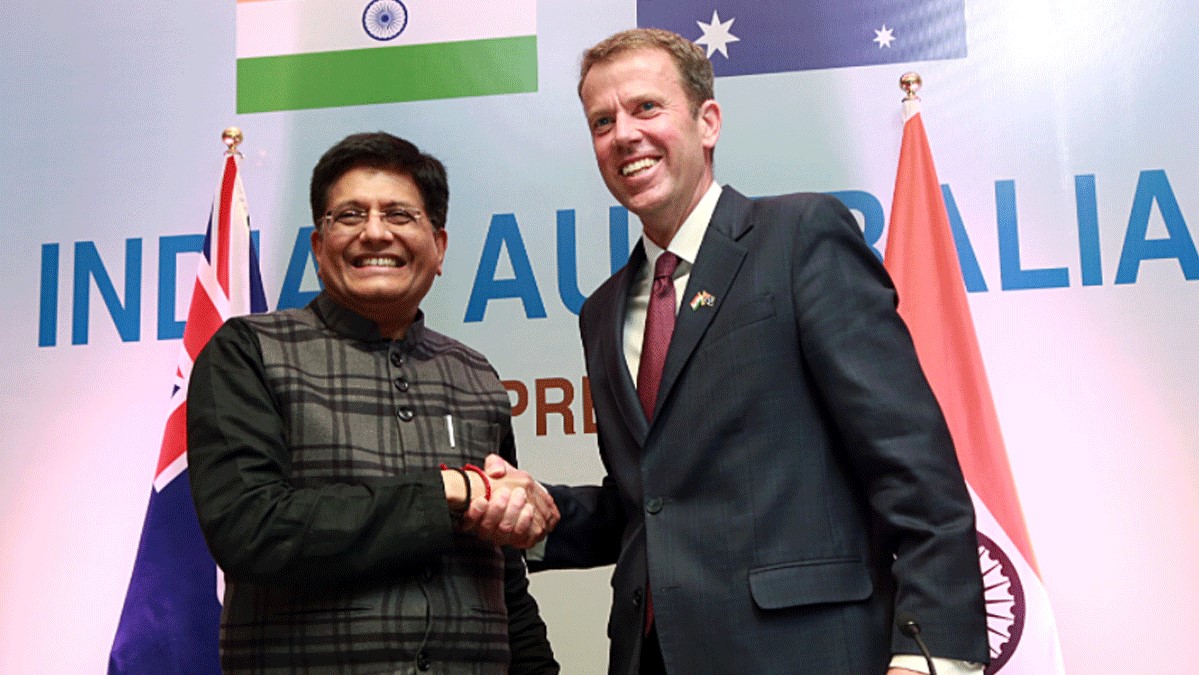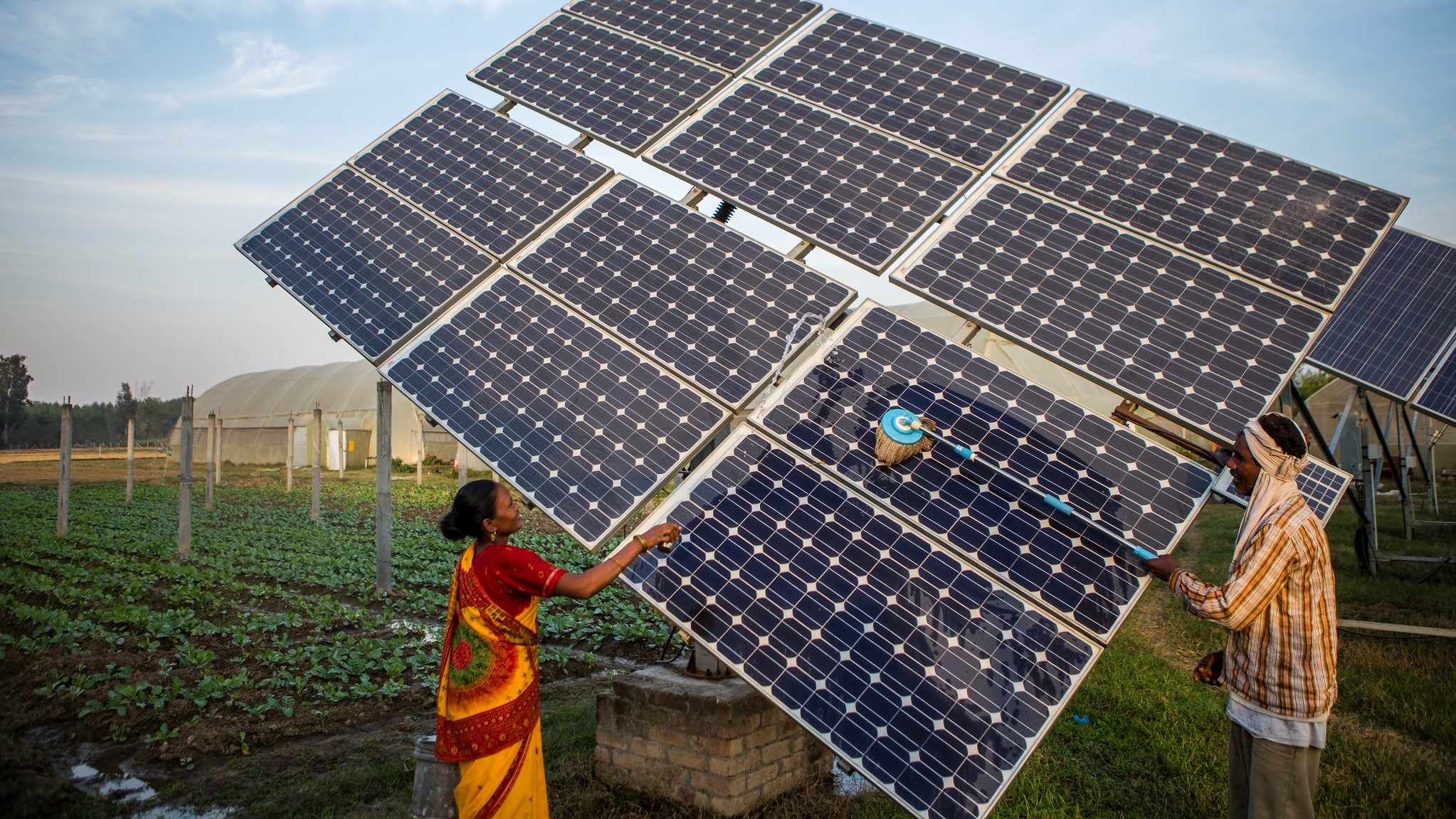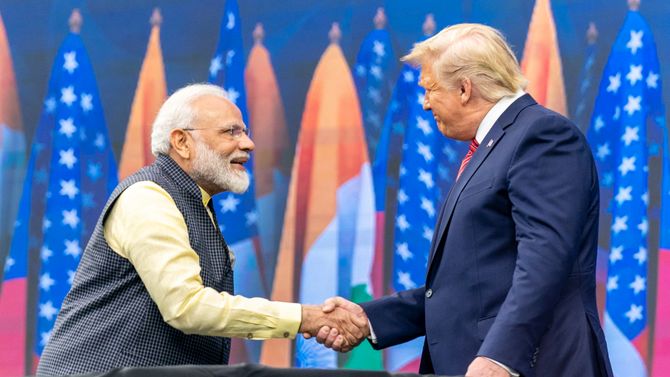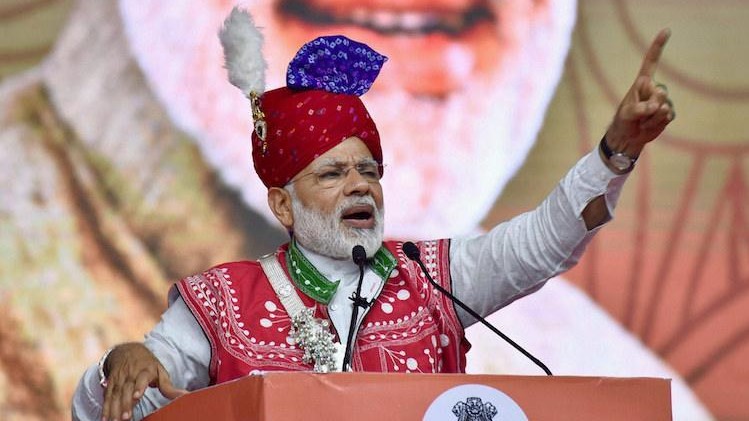The signing of the Australia-India Economic Cooperation and Trade Agreement (ECTA) in April 2022 marked the single most wide-ranging deal signed by India since its 2011 free trade agreement (FTA) with Japan. This followed the signing of less comprehensive deals with the United Arab Emirates in 2022 and Mauritius in 2021. Is India returning to free trade deals?
Several key factors took India over the line during the negotiations. Some of India’s most sensitive agricultural sub-sectors – dairy, rice, beef, wheat, and lentils – were excluded from tariff liberalisation and may continue to be excluded from the final version of the agreement. Although ECTA is only interim in nature, there is no guarantee that any of these goods will be included in any ultimate agreement.
Another successful strategy for ECTA was playing to India’s strengths in services, worth US$250 billion globally,[4] and pharmaceuticals, worth US$24 billion.[5] More than 50,000 Indian students in Australia will benefit from significantly enhanced rights to work, post-graduation.[6] Discussions will begin on the mutual recognition of qualifications for a wide range of industries and Indian firms will obtain better access to over 100 services sub-sectors.[7] Finally, regulatory requirements have been eased for India’s rapidly growing[8] pharmaceutical exports to Australia, worth some US$225 million.[9]
RCEP – bigger is smaller and smaller is bigger
India’s tentative re-commitment to free trade follows New Delhi’s departure from negotiations on the Regional Comprehensive Economic Partnership (RCEP) in 2019.
RCEP illustrates New Delhi’s preference for bilateral rather than big-ticket multilateral agreements.
To begin with, the influence of powerful vested interests must be considered. Agriculture makes up around 40% of the workforce and is a mainstay of entire state economies.[14] India’s under-developed dairy industry was, for example, particularly wary of the threat of competition from the highly industrialised dairy industries of New Zealand and Australia.[15]
Another interrelated point is the preference for self-reliance. This is exemplified by New Delhi’s “Make in India” initiative, which seeks to raise manufacturing’s share of GDP from 25%, up from approximately 13% today. Throughout his tenure, Prime Minister Modi has levied some 3,000 tariffs affecting 70% of India’s imports. In an effort that has a long history in India, the objective of this policy is to help shelter and nurture domestic champions. Two huge conglomerates are among the main beneficiaries of this policy.
Why are bilateral agreements any different?
By dint of its economic size and strategic importance, India is in a much better position to mollify contradictory domestic interests when negotiating bilaterally. Negotiating with the combined heft of RCEP, India was unable to secure the requisite carve-outs for its most politically sensitive sectors. Professional mobility in RCEP, for example, remained a particular sticking point, subsequently depriving India of a clear and identifiable political sweetener.
The inherently selective nature of bilateral agreements is also politically conducive. By charting its course, India can minimise nationalist and protectionist ire, deliberately choosing friendly countries whose perceivable threat to local industry is limited or manageable through exemptions.
More deals on the horizon
With talks due to commence in June this year, the India-EU deal will be the most interesting to watch.[21] India featured heavily in the EU’s Indo-Pacific Strategy and there is a strong push in Paris and Berlin to shift Europe’s Asian economic focal point away from China.
Combined with a suite of bilateral deals, a BIMSTEC deal would help assuage concerns about India’s non-participation in RCEP. India’s piecemeal approach is better than no action at all.
1. Angus Livingston, “Cheaper exports: Australia to sign $12.6 billion trade deal with India”, Sydney Morning Herald, https://www.smh.com.au/politics/federal/cheaper-exports-australia-to-sign-12-6-billion-trade-deal-with-india-20220401-p5aa1i.html
2. Joshua Busy et al., “The case for US cooperation with India on a just transition away from coal”, Brookings Institute, https://www.brookings.edu/research/the-case-for-us-cooperation-with-india-on-a-just-transition-away-from-coal/
3. Akhil Ramesh, “India and Australia's winning deal on trade will boost the Quad”, Nikkei Asia, https://asia.nikkei.com/Opinion/India-and-Australia-s-winning-deal-on-trade-will-boost-the-Quad
4. The Hindu staff writers, “India’s services exports in 2021-22 touch all-time high of $250 billion”, The Hindu, https://www.thehindubusinessline.com/economy/indias-services-exports-in-2021-22-touch-all-time-high-of-250-billion/article65318398.ece
5. Business Standard staff writers, “Indian pharma exports grow at 18% to $24.44 billion in FY 21 from $20.58 bn”, Business Standard, https://www.business-standard.com/article/companies/indian-pharma-exports-grow-at-18-to-24-44-billion-in-fy-21-from-20-58-bn-121041700237_1.html
6. Anthony Galloway, “Architects, engineers and accountants to be recognised in India free trade deal”, The Age, https://www.theage.com.au/politics/federal/architects-engineers-and-accountants-to-be-recognised-in-india-free-trade-deal-20220403-p5aaf6.html
7. Economic Times staff writers, “India, Australia to sign interim trade pact on Saturday; thousands of Indian exports to get duty free access”, Economic Times, https://economictimes.indiatimes.com/news/economy/foreign-trade/india-australia-to-sign-interim-trade-pact-on-saturday-thousands-of-indian-exports-to-get-duty-free-access/articleshow/90596828.cms?utm_source=contentofinterest&utm_medium=text&utm_campaign=cppst
8. Priyanka Sharma & Dilasha Seth, “India seeks easy access for pharma to Australia mkt”, Live Mint, https://www.livemint.com/companies/india-seeks-easy-access-for-pharma-to-australia-mkt-11646767116305.html
9. Emma Connors, “‘Get on the plane as soon you can’: the upside of India trade deal”, The Australian Financial Review, https://www.afr.com/world/asia/get-on-the-plane-as-soon-you-can-the-upside-of-india-trade-deal-20220403-p5aafe
10. Rod McGuirk, “Australia and India thank Quad for new free trade deal”, ABC News Go, https://abcnews.go.com/Business/wireStory/australia-india-quad-free-trade-deal-83905110
11. Rahul Nath Choudhury, “Explaining India’s growing enthusiasm for FTAs”, East Asia Forum, https://www.eastasiaforum.org/2022/04/25/explaining-indias-growing-enthusiasm-for-ftas/.
12. OEC staff writers, “UAE-India trade”, OEC, https://oec.world/en/profile/bilateral-country/are/partner/ind#:~:text=India%2DUnited%20Arab%20Emirates%20In,Broadcasting%20Equipment%20(%241.23B)
13. Mohamed Zeeshan, “There’s a New Quad in Town: India, Israel, US, UAE”, The Diplomat, https://thediplomat.com/2021/11/theres-a-new-quad-in-town/ https://thediplomat.com/2021/11/theres-a-new-quad-in-town/
14. Yogima Seth Sharma, “Share of agriculture sector in employment sees steady increase: CMIE”, Economic Times, https://economictimes.indiatimes.com/news/economy/indicators/share-of-agriculture-sector-in-employment-sees-steady-increase-cmie/articleshow/85266073.cms?utm_source=contentofinterest&utm_medium=text&utm_campaign=cppst
15. Surupa Gupta & Sumit Ganguly, “Why India Refused to Join the World’s Biggest Trading Bloc”, Foreign Policy”, https://foreignpolicy.com/2020/11/23/why-india-refused-to-join-rcep-worlds-biggest-trading-bloc/
16. Jitendra, “Farmers threaten to block essential supplies across India over RCEP”, Down to Earth, https://www.downtoearth.org.in/news/agriculture/farmers-threaten-to-block-essential-supplies-across-india-over-rcep-67188
17. Hindol Sengupta, “The economic mind of Narendra Modi”, Observer Research Foundation, https://www.orfonline.org/research/economic-mind-narendra-modi-56004/
18. Economic Times staff writers, “Join global value chains and RCEP”, Economic Times, https://economictimes.indiatimes.com/blogs/et-editorials/join-global-value-chains-and-rcep/
19. Krzysztof Iwanek, “RSS vs RCEP: Explaining Hindu Nationalists’ Opposition to RCEP”, The Diplomat, https://thediplomat.com/2020/12/rss-vs-rcep-explaining-hindu-nationalists-opposition-to-rcep/
20. News18 staff writers, “'India Means Business': Piyush Goyal Dubs Landmark Free-Trade Deal with Australia a 'Template for the World'”, News18, https://www.news18.com/news/india/india-means-business-commerce-min-piyush-goyal-dubs-landmark-free-trade-deal-with-australia-a-template-for-the-world-4959794.html
21. Karunjit Singh, “India, EU to hold talks on FTA in June, set 2023-2024 target”, The Indian Express, https://indianexpress.com/article/business/india-eu-to-hold-talks-on-fta-in-june-set-2023-2024-target-7894242/
22. Heather Stewart, “India and UK to press ahead with talks on free trade deal,” The Guardian, https://www.theguardian.com/world/2022/apr/22/india-and-uk-to-press-ahead-with-talks-on-free-trade-deal-modi-johnson
23. Kallol Bhattacherjee, “PM Modi moots free trade agreement for BIMSTEC”, The Hindu, https://www.thehindu.com/news/national/pm-modi-calls-for-strengthening-bimstec/article65273458.ece.
© The Hinrich Foundation. See our website Terms and conditions for our copyright and reprint policy. All statements of fact and the views, conclusions and recommendations expressed in this publication are the sole responsibility of the author(s).






